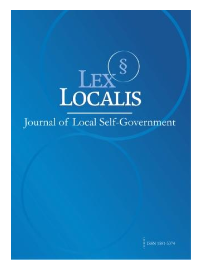TO INTRODUCE THE ALTERNATIVE MATHEMATICAL MODELS FOR SOLVING THE CURRIER TRANSPORTATION PROBLEM IN THE MIDDLE -INCOME COUNTRY: A SMALL LOT DELIVERY
DOI:
https://doi.org/10.52152/801365Keywords:
Currier delivery, Traditional Transportation Problem, Transportation problem based on distance, Transportation problem based on distance and time, Geographic Information System, Energy consumption.Abstract
This study seeks to introduce the alternative mathematical models for addressing the courier transportation problem using personal vehicles. Initially, a review of relevant literature was conducted to inform the development of these models, particularly focusing on groups of courier deliveries characterized by special orders or small lot sizes, with an emphasis on minimizing costs associated with energy consumption. Subsequently, two mathematical models were formulated: one addressing the transportation problem based on distance with a fixed transport speed (TPD), and another that considers both distance and time (TPDT). These models were numerically analysed using the exact method facilitated by the Solver Add-in in Microsoft Excel 2021, incorporating secondary data sourced from Geographic Information System (GIS) data via Google Maps in Thailand, a middle-income country. The analysis revealed that the transportation model incorporating both distance and time proved to be a more effectiveness than the model based solely on distance with a fixed transport speed, particularly when evaluating the cost objective function. It was determined that focusing exclusively on transport distance is insufficient for minimizing costs in real-world courier delivery scenarios. Therefore, transport planners are encouraged to consider both distance and time for managing special orders or small lots, as this approach holds significant potential for cost savings in practical courier transport planning.
Downloads
Published
Issue
Section
License
Copyright (c) 2025 Lex localis - Journal of Local Self-Government

This work is licensed under a Creative Commons Attribution-NonCommercial-NoDerivatives 4.0 International License.








